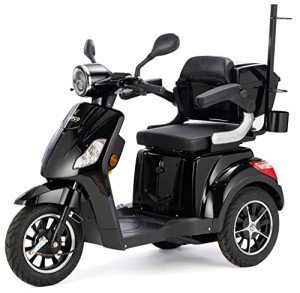What Freud Can Teach Us About Mobility Scooters
Mobility Scooters: A Comprehensive Guide
Mobility scooters have ended up being an essential mode of transportation for many people facing mobility difficulties. This short article explores the different elements of mobility scooters, including their types, benefits, features, and a guide for potential buyers.
Understanding Mobility Scooters
Mobility scooters are electrically powered gadgets designed for people with limited mobility. They supply a method of transportation for individuals who may have trouble walking however still desire to keep their self-reliance. They can be found in various designs and functions to deal with a wide variety of needs.
Kinds Of Mobility Scooters
Mobility scooters can generally be categorized into 3 main types:
Type
Description
Best For
Compact Scooters
These are small and lightweight, ideal for inside and short trips.
Users with minimal storage space or those who travel often.
Mid-size Scooters
A balance between mobility and stability, suitable for both indoor and outside use.
Those who require to cover a range of terrains.
Durable Scooters
Large and robust, created for rugged outside use and much heavier people.
Users needing extra weight capability or going off-road.
Key Features of Mobility Scooters
The option of mobility scooter frequently depends upon the functions that align with individual needs. Here are a few of the key functions to consider:
Weight Capacity: Mobility scooters feature different weight limits. It is essential to select a scooter that can sufficiently support the user's weight.
Range: The range a scooter can travel on a single charge varies. Depending upon user needs, one might go with scooters with a range of approximately 40 miles.
Speed: Most mobility scooters can reach speeds between 4 to 8 miles per hour. Consider what speed is comfortable and safe for the intended environment.
Turning Radius: A compact turning radius is vital for indoor use, allowing for simpler navigation in tight spaces.
Battery Type: The kind of batteries used can affect the scooter's efficiency. Lead-acid and lithium-ion batteries are the most typical.
Benefits of Using Mobility Scooters
The advantages of mobility scooters extend beyond simply transportation. Some crucial advantages consist of:
Independence: Users can navigate their environment without relying on caregivers, promoting self-reliance and self-esteem.
Health Benefits: Using a scooter can encourage outdoor activity, resulting in physical and mental health improvements by decreasing feelings of seclusion.
Convenience: Scooters can quickly be run in different environments, whether indoors, in mall, or outdoors.
Important Considerations When Buying a Mobility Scooter
When buying a mobility scooter, numerous considerations can assist ensure that you pick the best model:
Assess Individual Needs:
- Mobility level: Consider how much support the person will require.
- Variety of usage: Determine where the scooter will primarily be utilized (inside, outdoors, on rough surfaces, etc).
Test Drive:
- Always test drive a number of models to discover an ideal fit. Take note of comfort, ease of steering, and the scooter's responsiveness.
Evaluation Safety Features:
- Look for scooters with appropriate security features like lights, indications, and anti-tip designs.
Check Warranty and Service Options:
- A reliable service warranty and readily available service alternatives are important for long-lasting use.
Frequently Asked Questions about Mobility Scooters
**1. How quick do mobility scooters go?Mobility scooters usually have speeds varying from 4 to 8 miles per hour, with many designed for security rather than high-speed travel. 2. Are there compact mobility scooters on mobility scooters?Yes, mobility
scooters feature specific weight limits, often ranging from
250 pounds to over 500 lbs, depending upon the design. 3. Can mobility scooters be utilized indoors?Certain designs, particularly compact scooters, are specifically designed for
**indoor usage and are easier to navigate in tight areas. 4. How often do the batteries need to be replaced?Battery life can vary based on use, however typically, with proper care, batteries might last between 1 to 3 years before needing replacement
**. 5. Are mobility scooters covered by insurance?Coverage can differ, but some insurance strategies, including Medicare and Medicaid, might cover part of the expense. It's recommended to examine with private insurance companies. Mobility scooters act as a
valuable tool for many people, allowing them to maintain
their liberty and independence. By understanding the different types and features of mobility scooters, people can make informed decisions customized to their specific needs.
Whether utilized for errands, mingling, or leisurely activities, mobility scooters can improve the lifestyle for those with mobility limitations. Investing in a mobility scooter is a choice that can significantly impact a person's daily life. Therefore, people should carefully assess their choices and select a design that best lines up with their lifestyle and mobility requirements
.  ******
******